This weekend’s celebration brings an army of chefs, musicians, bartenders and parade teams to a distant tradition with ties to Sacramento
By Scott Thomas Anderson
Powerful preaching horns fire over the bow of a 98-year-old ship on the Sacramento River. A tub-thumping drum follows, revving up the band’s full, pulsing heartbeat. These players come from the area’s best street jazz brigades, including Element Brass Band, City of Trees Brass Band and Dirty Chops Brass Band. As they step across a gangplank, Preston Marx – raised in a working-class district of New Orleans – does a dancing march in front of them, his Mardi Gras beads nearly swinging on the beat. Promotor Alicia Fulbright is at Marx’s heels. She stabs a southern umbrella up and down with the horns’ joyous flare, ushering the band past a massive nautical wheel that’s decorating the boat’s inner hull.
There’s a welcome party waiting for them. Lashunda Cormier, the careful hands behind Louisiana Heaven restaurant, is decked in a NOLA-themed hoodie as she urges the players on. Jamie Mack, the pastry chef who’s been bringing French Quarter flare to Sacramento, is just as caught up in the moment. As the procession makes its way toward a spattering of hurricane cocktails and coned colorful cakes, “Louisiana Sue” Ramon appears in a glittering cape, calling out with a singe of her native ‘yat’ accent, “Welcome aboard the Delta King!”
This is King’s Day in Sacramento – the official kickoff to Mardi Gras season on the city’s historic waterfront.
Everyone involved this morning is readying for the main event they’ll participate in on Feb. 18 and 19 in Old Sacramento: That’s when Ramon and Fulbright will try to top the surprising 25,000 people who came out for the city’s Mardi Gras last year. With 14 bands, multiple cooks and pastry chefs joining the festivities, Ramon and Fulbright think their combined “grannie power” has summoned the ultimate team to pull off the biggest Mardi Gras throw-down west of the Mississippi. Ramon stresses that this is especially true of Cormier, Mack and the array of musicians now ringing in King’s Day. And the same is true of the Delta King itself. The grand paddle wheeler’s twin sister vessel, the Delta Queen, currently resides in the Port of New Orleans. Together, the two vessels symbolize broader connections between Sacramento and the Crescent City over time and space.
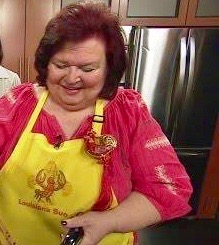
Those ties run deep – and Ramon knows it. That’s why she is having the Delta King be the official headquarters for this year’s Mardi Gras. It’s where all the action starts on Saturday at 11 a.m. with the crowning of the Mardi Gras kings and queens, which includes well-known actor Christian Jules LeBlanc – from The Young and the Restless – and actress Catherine Bach – Daisey of Dukes of Hazzard fame – for the Krewe of Gumbo; as well as the crowning of King Justin and Queen Izzy of the Krewe of Sacramento Zombie Club. There will be vendors and free entertainment in the streets of Old Sacramento throughout the weekend, while the ticketed event is a smorgasbord of bands and cooks partying below the freeway underpass.
The event runs 11 a.m. to 11 p.m. on Saturday and noon to 11 p.m. on Sunday. However, the Delta King is where revelers can retreat to for cabin rooms, craft cocktails and stunning views of the river as music fills the February sunset.
“It’s perfect because the Delta Queen is in New Orleans,” Ramon reflects. “I got here to Sacramento in the 1980s right when the Delta King came in; and being from Louisiana, I just ran to the boat. New Orleans is a port – a vibrant one – and I would love to see that happen to the City of Sacramento. That’s what the Delta King represents that to me. The food on the boat is great; the people who work here are outstanding; and it’s just a wonderful atmosphere – and it’s not just of days gone by, but of better days.”
Cites at the mercy of rivers
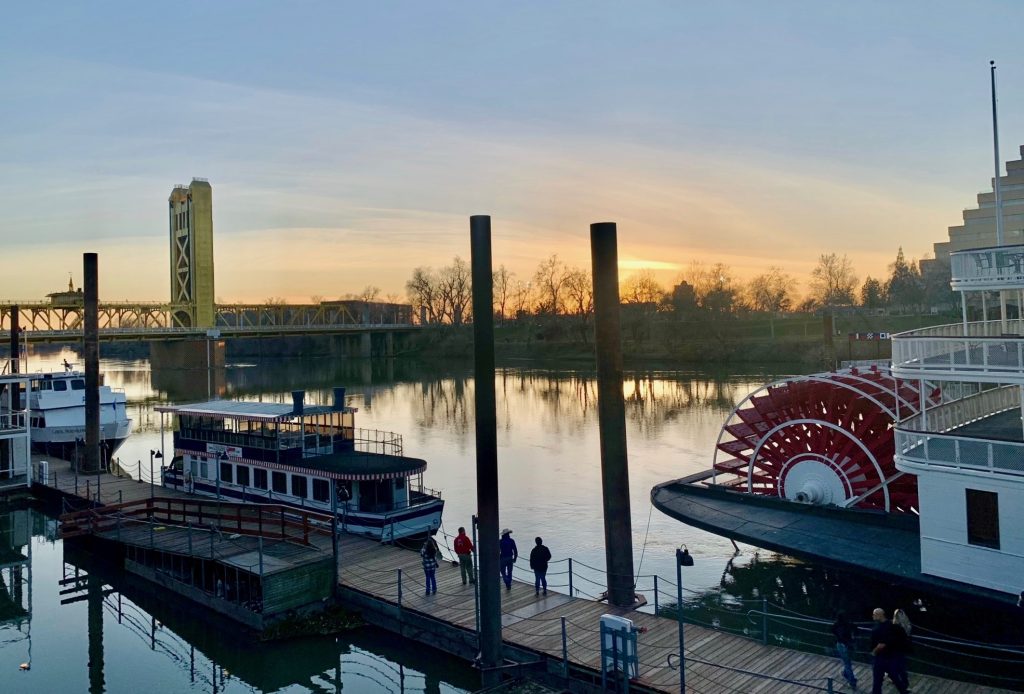
Ties between the Capital City and New Orleans goes back to the California Gold Rush. In 1850, the grandson of a legendary Cherokee warrior arrived in Sacramento’s bustling streets and rowdy mining camps. His name was John Rollin Ridge – and he was a stranger followed by shadows. Most of the men in Ridge’s family had been killed during a Cherokee civil war back in the Arkansas territory. After turning 21, Ridge was pulled into a fight with a man he believed was connected to his father and grandfather’s assassinations. Ridge shot the man dead. Inner-tribal adversaries started calling for Ridge’s blood. The young man quickly lit out of the South, steering his horse for the new promises of California. He was soon walking the boardwalks of Sacramento at the mid-century mark. Prospectors and merchants at the time remarked Ridge was the best-looking man they’d ever seen in the gold fields. He ultimately became one of California’s pathfinding writers. Ridge was first hired as a journalist for a newspaper called The New Orleans True Delta, a Crescent City publication with a Sacramento bureau at the corner of Front and J Street. Ridge filed stories on topics that readers who lived along the Mississippi Delta could relate to – the trade and gambling action happening along the waterways of California’s Delta.
Paychecks from New Orleans allowed Ridge to hone his craft so that, in 1857, he became the founding editor of The Sacramento Bee. While the Irishman James McClatchy, who quickly took over, is remembered as the writer behind its trajectory, Ridge was the one who wrote The Bee’s mission statement and first editorials, as well as secured the contacts that would lead to it becoming Sacramento’s paper of record. After McClatchy took over, Ridge went on to produce the first hit novel ever written in California, “The Life and Adventures of Joaquin Murieta, the Celebrated California Bandit.” He was a southerner who had started the seeds of a far-west literary voice.
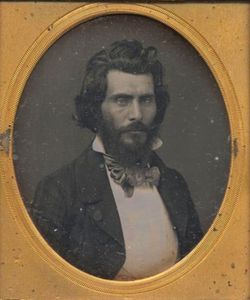
By 1927, James McClatchy’s son, C.D., had made The Sacramento Bee such a success that it began opening another newspaper in Modesto. That same year, shipbuilders in Glasgow, Scotland, put the finishing touches on an elegant pair of 285-foot river boats. They were white big-wheel paddlers – opulent ships destined for the California Delta. They would be the “King” and “Queen” of the waterfronts between San Francisco and Sacramento. The Prohibition-era drinking, gambling and jazz enlivening their decks was born from riverboats traditions on the Mississippi Delta, particularly those making the run from Baton Rouge to New Orleans.
One person who’s keenly interested in this history is Adam Stemmler, the food and beverage director of the Delta King. A veteran mixologist who likes studying the genesis of classic cocktails, Stemmler thinks having the Delta King serve as headquarters for Sacramento Mardi Gras fits with various strands of the past.
“I hope it really shines a light on all of the cross-pollinizing between New Orleans and here,” Stemmler observes. “Our sister ship, the Delta Queen, was actually towed through the Panama Canal into New Orleans, up the Mississippi River, when it was purchased by the Green Line Company out of Cincinnati. So, there’s just so many tie-ins with New Orleans and Sacramento … One of the very first things I did when I got here was put the Hurricane cocktail on our menu, because of the tie-ins with World War II. That’s when the drink became popular at a bar in the New Orleans French Quarter called Pat O’Brien’s. Fun fact this boat, the Delta King was commandeered by the U.S. Navy in World War II to help out with the war effort. So, when I knew those two pieces of history linked in together, I decided, with the Hurricane, we’re going to lean into that one hard.”
The Hurricane is a blending of light rum, dark rum, orange and lime juices, passion fruit syrup and a touch of grenadine. In Louisiana, it’s the official drink of Mardi Gras. The bartenders on the Delta King will also be marking the festivities with the Sazerac, a cocktail that was first invented in New Orleans during the same year that John Rollin Ridge was filing Sacramento stories for a Crescent City newspaper.
“We make Sazerac the original way here,” Stemmler notes. “A lot of people don’t know this, but the cocktail actually pre-dates the mass production and distribution of Rye whiskey. So, it was originally a Cognac cocktail … Every rye whiskey cocktail was a bourbon cocktail first.”
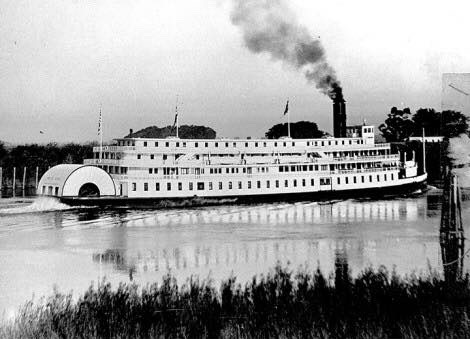
Other New Orleans-connected drinks that the Delta King will serve are The French 75 and “the green fairy” of Absinthe.
The legacy of drinks and boats are a fun topic, but since the outset of the 21st century there have been more hair-raising connections between Sacramento and New Orleans.
In the wake of Hurricane Katrina triggering Louisiana’s greatest disaster in modern history, those piecing the together what had happened became keenly aware of California’s capital city. That’s because, like New Orleans, Sacramento has large population zones protected from complete deluge by levee systems. And like New Orleans, many of Sacramento’s levees are monitored and maintained by the Army Corps of Engineers. It’s generally accepted that it was not Hurricane Katrina itself that caused 1,800 deaths and $9 billion in damages to the Crescent City in 2005, but rather the failure of levees along the Mississippi River and Lake Pontchartain. In his 2010 documentary The Big Uneasy, actor and musician Harry Shearer called out Sacramento by name as the city where people should be most-worried about how the Army Corps performed leading up to Katrina. If anyone in California wondered if the iconoclastic Shearer – known for The Simpsons and This is Spinal Tap – was exaggerating about the importance of levees, that question was probably removed last month when a small failure in one in Sacramento County reportedly led to three people drowning in their cars and the whole town of Wilton being evacuated.
In other words, there’s a reason so many New Orleanians have an awareness of Sacramento.
A rebirth of feelings

In the years since Katrina, as New Orleans rebuilt and recovered, musicians from Northern California began flocking to its historic neighborhoods to learn the culturally specific type of jazz that sprang up there – the first jazz that was played anywhere in the world.
Element Brass Band, City of Trees Brass Band and Dirty Chops Brass Band have become Sacramento’s exciting acts transporting that musical heritage here. Members regularly perform at Sacramento venues like The Shady Lady and The Torch Club, as well as Nevada City’s Chief Crazy Horse Bar. The groups have also been participating in a nonprofit performance collective called Bigger Than Us Art, which will be leading the jazz action at Sacramento Mardi Gras.
Trombonist Joby Morrow, who was blasting under the clouds along Sacramento’s waterfront on King’s Day, says Bigger Than Us Art will be leading the occasion’s Second Line Parade.
“This is both a visceral and challenging music,” Morrow notes of the New Orleans sound. “So, there is an instant sense of comradery. And this type of music encourages you to listen to what the collective sound is, so you can fit into – and it encourage you to sometimes take the lead. But, also, it’s almost like a flock of migrating birds, where you’re looking at each other to see where to go, who’s going to do what, and that’s even though everyone has a basic sense of where they need to be.”
Smiling, Morrow adds, “So, that’s part of the challenge to playing music like this, but it also just feels good: Between the two of those things, it’s a really captivating type of music.”
It’s not just performers who have been migrating to New Orleans and back. Pastry chef Jamie Mack, born and raised in Sacramento, made a pilgrimage to the Big Easy to learn how to make French-influenced beignets. Mack, who won Episode 6 of Baketopia on HBO Max, is a veteran baker who was encouraged by friends to reproduce New Orleans’ go-to dessert in Sacramento.
“So, I went to New Orleans to figure it out,” Mack recalls. “I loved the experience. I went and ate as many beignets as I could find; and then came back and wrote about 15 to 20 recipes. I worked with those until I got it right.”
Mack is now the owner of Spider Monkey Dessert Studio, who will be serving up beignets and chicory coffee at Sacramento Mardi Gras.
“We’re probably the only real Louisiana -style beignet you’ll find out here,” Mack admits.
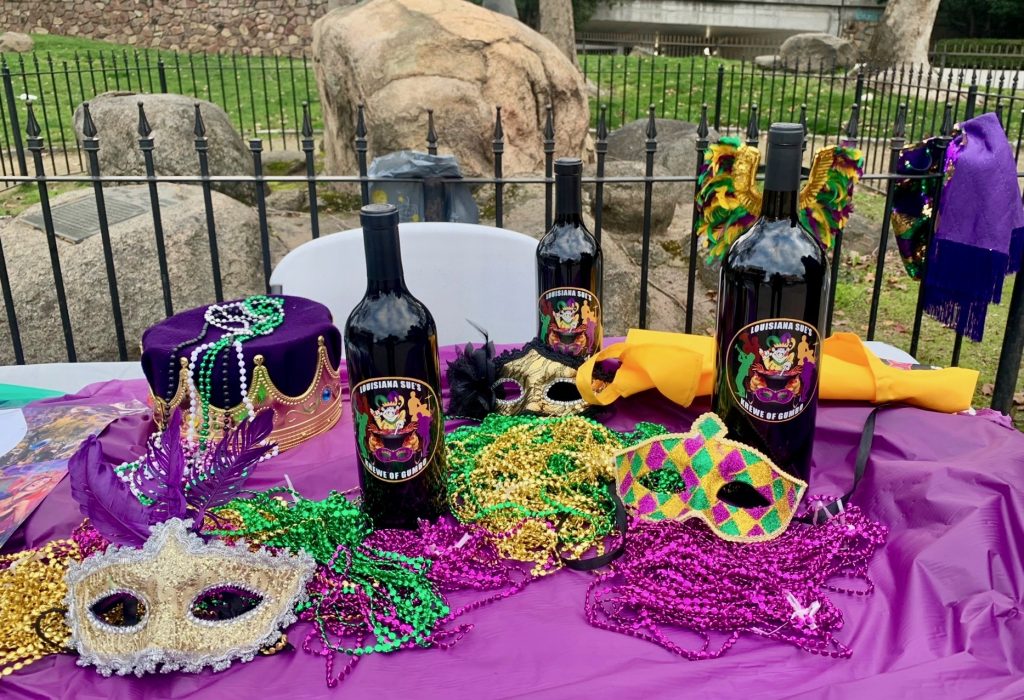
One regional business with historic affinities to Prohibition-era New Orleans is E2 Family Winery. In the 1930s, the Crescent City was one of the most-successful scofflaw communities in the nation. Almost nothing could stop the booze flowing there. Yet, there was also a winemaker in Lodi at the same moment who was good at keeping cups filled: Herman Walter Ehlers of East Side Winery managed to duck the Volstead Act by producing vino for holy church communion. Back then, uptight politicians thought they could try to change human nature, but they knew they couldn’t cheat God.
Herman Ehlers’ savviness has led to his descendants still making wine in Northern California 101 years after he started. Ramon thinks it’s thematically fitting that E2 Winery is bottling and pouring the official wine for Sacramento Mardi Gras.
Herman Ehlers’ great-grandson, Bret Ehlers, agrees.
“It started with my great-grandfather literally making the wine in his backyard in the barn and then passing it down through the generations to us,” Bret observes. “We do a lot of Pino Noir now, as well as Cabernet and Old Vine Zinfandel … We’ve labeled and bottled a limited release for this coming weekend. Next year, we’ll be putting together an even bigger package.”
In addition to drinks and desserts, Ramon’s put a lot of energy into recruiting cooks for Mardi Gras who reflect Gulf Coast sensibilities. One of them is barbecue master Ken Rowe, who started working grills when he was 5-years-old before – in his words – getting serious about it at age 15. Rowe’s Low and Slow Barbecue operation will be smokin’ up tri tip, ribs, chicken and pulled pork sliders for the occasion.
“We’re going to be selling some Cajun barbecue,” Rowe stresses. “For us, Mardi Gras is really about seeing people we’ve seen at past events in Sacramento.”
On the food front, Ramon also has two Mardi Gras chefs directly from her home state. One is Lashunda Cormier: She is the subject of SN&R’s feature this week “Louisiana Heaven keeps its memories going year-round at south city restaurant.” The other is Willis Webster of NOLA’s Kitchen. Webster was born and raised in the Seventh Ward of New Orleans. He landed in Sacramento after the chaos of Hurricane Katrina. Webster has been catering Creole-style gumbo, po boys, jambalaya, catfish and red beans and rice for the Capital City going on ten years. Recently, he got a food trailer to help him cook for bigger events like Sacramento Mardi Gras.
“It’s real New Orleans stuff,” Webster says of what he dishes out. “Cooking is kind of my get-away, you know, my peace of mind. And having an event like this Mardi Gras, if you’re from New Orleans, it’ll make ya feel a little bit at home – I get a little bit of that feeling.”

Another person looking forward to the sensation is Auburn attorney Preston Marx III. Like Webster and Ramon, he was raised in the Big Easy. His family helped found a Mardi Gras float team in their neighborhood in 1952 called The Krewe of Freret. Marx is now the captain of Sacramento’s Krewe of Gumbo parade gang. He will have his father, Preston Jr., with him at Sunday’s noon-time Second Line Parade going from the Capital Mall to Old Sacramento. It is Marx’s way of representing a longtime family tradition.
“Mardi Gras and Mardi Gras Season is a time to take yourself away from the dailiness all of this and to put on some hats and some beads and dance around and just be you – whatever you are – and just enjoy life for what it is,” Marx observes. “And when I rode those floats in New Orleans when I was young, I’d see the smiling folks, I’d see the little kids getting a trinket, and all the people lined down the streets. And to bring that joy to the people here in Old Sacramento is an absolute privilege and a delightful thing to do. Life is hard enough, but we can bring some little drops of joy to it. We always need to take that opportunity.”
Scott Thomas Anderson is also the host of the ‘Drinkers with Writing Problems’ podcast, Episode 3 of which was written and recorded in the city of New Orleans, while Episode 6 covers the life of John Rollin Ridge in the Sacramento region.

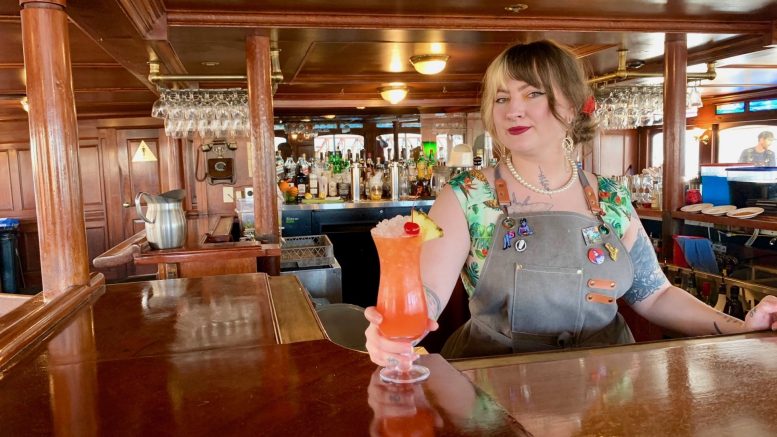
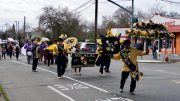
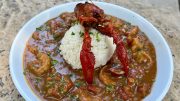
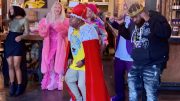
Be the first to comment on "Currents of history swirl around the Delta King as Old Sac readies for ‘the biggest Mardi Gras in the West’"